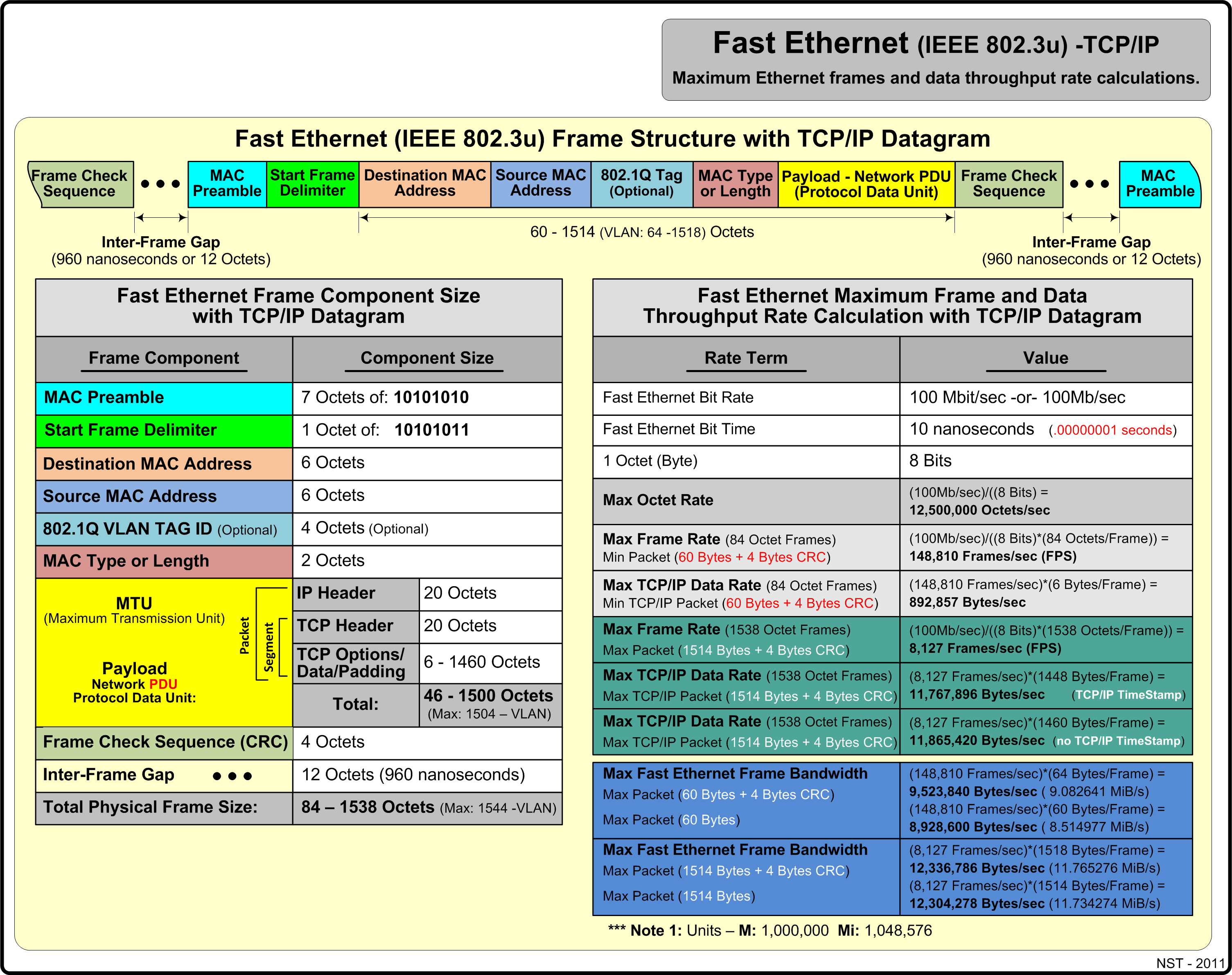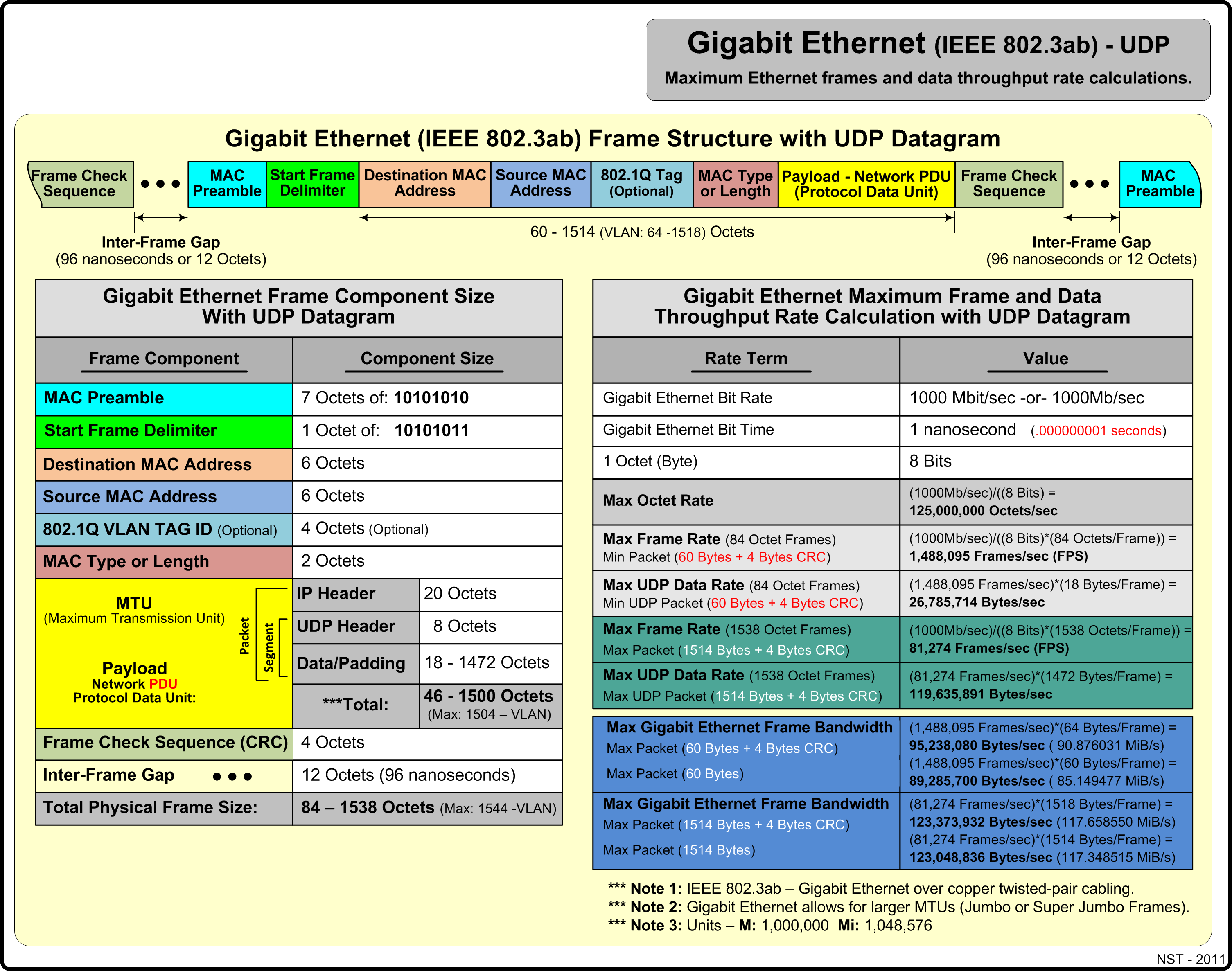LAN Ethernet Maximum Rates, Generation, Capturing & Monitoring
Contents
Overview
This article covers maximum LAN Ethernet rates values that can be achieved for both Fast Ethernet and Gigabit Ethernet using the TCP/IP or the UDP network protocols. The steps on how to generate, capture and monitor maximum Ethernet rates will be shown using various tools bundled with the Network Security Toolkit (NST). Finally, a demonstration on how Linux segmentation off-loading for supported NIC adapters can produce Super Ethernet Frames that are captured and reported by the network protocol analyzer will be presented.
Ethernet Maximum Rates
Ethernet Background Information
This article discusses the maximum and effective data throughput performance and rates when using TCP/IP and UDP network protocols in the LAN. A stepwise approach is presented and explains how to determine these rates using various tools found within the NST distribution. We will follow many of the methods described in RFC 2544 "Benchmarking Methodology for Network Interconnect Devices" to perform benchmark tests.
To get started some background information is appropriate. Communication between computer systems using TCP/IP takes place through the exchange of packets. A packet is a PDU (Protocol Data Unit) at the IP layer. The PDU at the TCP layer is called a segment while a PDU at the data-link layer (such as Ethernet) is called a frame. However the term packet is generically used to describe the data unit that is exchanged between TCP/IP layers as well as between two computers.
First, one needs to know the maximum performance of the network environment to establish a baseline value. We will be using a switched Gigabit Ethernet (IEEE 802.3ab) network configuration. We chose this configuration because it is a typical network topology used in today's enterprise inter-networking environments.
Frames per second (FPS) or Packets per second (PPS) is a common method of rating the throughput performance of a network device. Understanding how to calculate frames per second can provide a lot of insight on how the Ethernet system function and will help assist in network architecture design.
The following sections show the theoretical maximum frames per second that can be achieved using Fast Ethernet (100 Mb/sec) and Gigabit Ethernet (1000 Mb/sec) for the TCP/IP and UDP network protocols. Today's network switches and systems configured with commodity based network NIC adapters allow these theoretical limits to be reached. In reality though, Ethernet frame data sizes are dictated by the upper application layers which use a wide range of payload sizes. Thus, it is unlikely in practice to see network segments saturated consistently at these maximum rates.



